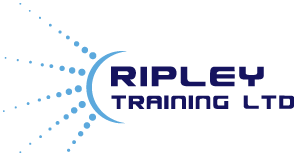Writing press releases is a common form of media relations activity, as a means of generating positive goodwill about your company or brand. Many small businesses may not have the budget to outsource their public relations activity to a PR agency, and so they may decide to do it in-house. So, if you need to write a press release, we’ve put together some useful tips on how to write an effective press release to get your news featured in the media.
Where do press releases generally go wrong?
A press release should contain newsworthy content. By newsworthy, this means: why should anyone care about your news? The problem with many press releases is when the company is trying to overtly sell or promote something about their organisation; or the news simply isn’t interesting – such as your office has just upgraded its water cooler!
What can you do to make your press release better?
A great press release attracts the attention of a journalist or editor, in order to get your news featured in their publication. Try following these steps to get your press release from good – to great:
1. Make sure your news is newsworthy.
Make sure your announcement has some news values such as timeliness, uniqueness or something truly unusual. Be clear in your mind why this information is of interest to this particular journalist/editor, and the publication’s audience. Look at the publication’s features listing/calendar, and if they’re focusing on a particular topic in a particular month that is relevant to your business, tailor your news to fit in with this.
2. Use the headline and first paragraph to tell the story
You have just a matter of seconds to grab your readers’ attention. Don’t blow it with a weak opening!
o Summarise the whole story in the first paragraph (as journalists edit a press release from the bottom up)
o Don’t try and be clever with the headline (as this will usually be written by the publication)
3. The rest of your press release should provide the detail
o Use the second and third paragraph to expand the theme of the first paragraph
o Add interesting background information and evidence to back up the claims you’re making
o Include quotations and endorsements (make sure whoever you have quoted has approved these in advance)
4. Convey the essence of the story within the first few lines (‘Five Ws’)
o Who is it about?
o What is it about?
o Where did it happen?
o When did it happen?
o Why is this beneficial/useful/unique etc?
5. Include a photo
A photograph is often the first thing a journalist will look at before your press release, so a photo truly does say a thousand words! If you’re including a photograph, add brief details at the bottom of the release so the journalist can check the details and/or request another copy.
6. Write as you’d like the copy to be used
In today’s digital world many online media outlets may pick up your press release and run it in their publications with little or no modification, however, on occasion, journalists will use your press release as a springboard for a larger feature story.
In either case, try to develop a story as you’d like to have it told. Editors often delete whole sections/paragraphs when they publish, so make sure each paragraph is able to stand alone, and still make sense without the surrounding copy. Even if your news is not reprinted verbatim, it may provide an acceptable amount of exposure.
7. Illustrate the story
Use real life examples about how your company has solved a problem, and do so by demonstrating why your company/brand is the right solution for a particular audience. Use real life examples to powerfully communicate the benefits of using your product or service – for example: if you’re reporting on a corporate milestone, make sure that you attribute your success or failures to one or more events. Or, if your company has experienced significant growth, tell the world what you did right. Show the cause and effect!
8. Stick to the facts and be concise
Remember to tell the truth. Avoid fluff and exaggerations because journalists are naturally skeptical and will avoid using anything they think has been embellished. Avoid using unnecessary adjectives, clichés, flowery language, bad grammar, or redundant expressions such as “added bonus”.
9. Don’t scream BUY ME!
A press release isn’t an advertisement. A good press release’s primary role is to inform, not sell.
10. Include a summary paragraph
Some distribution points only receive your headline, summary and a link to your press release; therefore if you fail to include a summary paragraph, you may reduce the effectiveness of your press release. Your press release should end with a short paragraph (often referred to as a ‘company boilerplate’ as part of a ‘Notes to Editors’ section) that describes your company, products, services and a short company history.
Ripley Training
We provide high quality accessible training to help businesses like yours develop effective Public Relations and Media Skills.
Get in touch with us today to see how we can help your business and boost your brand’s exposure with effective PR.

